Integrated Vegetation Management
Conservation is a state of harmony between human and land.
– Aldo Leopold
New Mexico Department of Transportation (NMDOT) maintains approximately 25,000 miles of roadsides, encompassing over 215,000 acres. While safety is always a primary driver of our roadside management program, NMDOT is also responsible for good environmental stewardship within our right of ways. In support of this, we are optimizing our roadside vegetation management practices through the implementation of an Integrated Vegetation Management (IVM) program. The mission of the IVM program is to develop and implement site-appropriate integrative management actions that result in resilient, self-sustaining native roadside vegetation that decrease the need for mowing and herbicide use. We believe our IVM program will significantly improve the ecological function and overall health of roadsides across the Land of Enchantment.
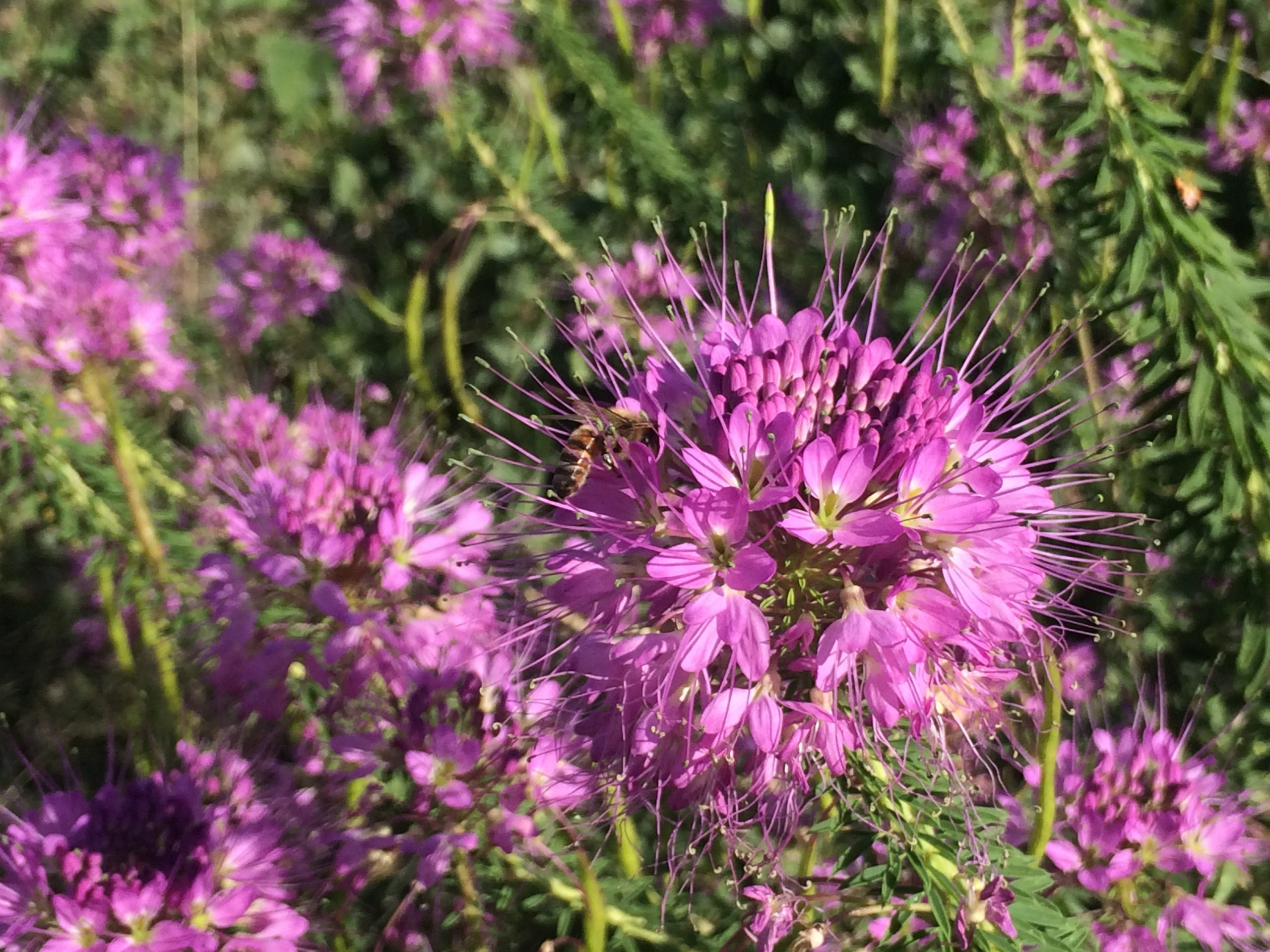
NMDOT's IVM Specialist
Our IVM specialist is dedicated to maintaining and advancing the IVM program by collaborating with DOT supervisors. The IVM specialist will be spearheading IVM initiatives and collaborations and ensuring that we are maintaining a detailed and systematic approach to continually improve our environmental stewardship of New Mexico’s roadsides.
Roadside Vegetation Management Mapping
As part of our IVM program, we’ve initiated state-wide management mapping across over 25,000 miles of our maintained roadsides. The resulting management map will document current vegetation management practices across the state and, in combination with monitoring data, will be used to evaluate the effectiveness of current management approaches and identify opportunities for improved management.
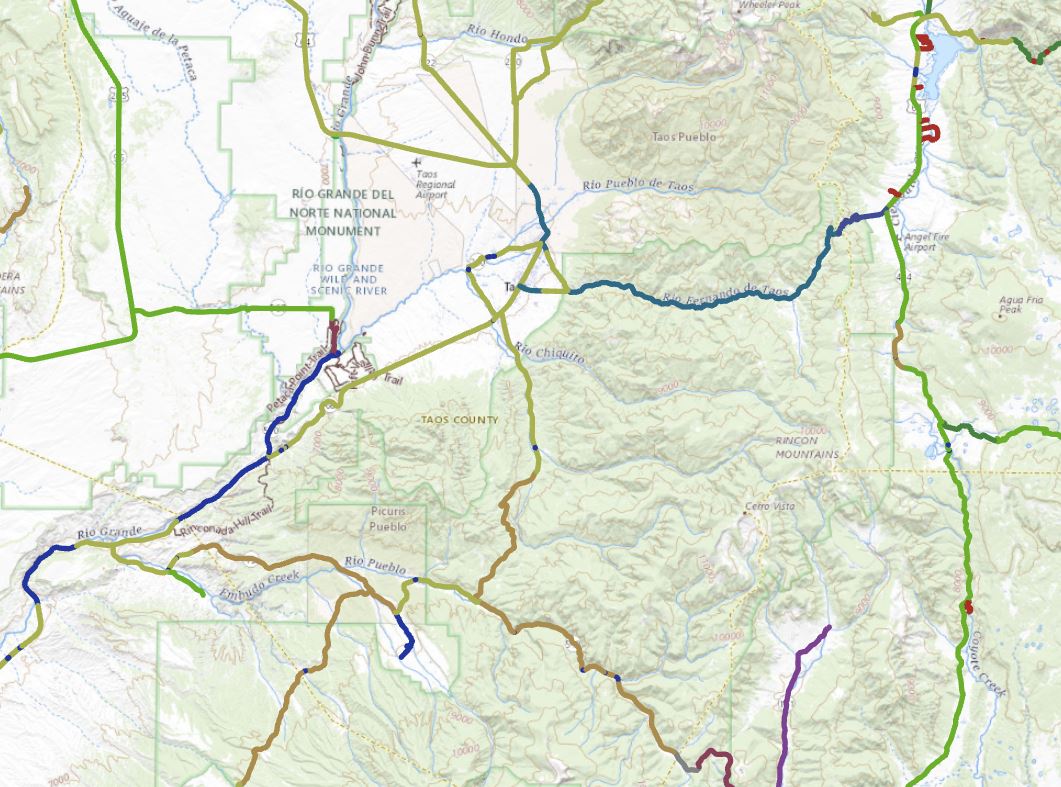

Roadside Vegetation Management Mapping
As part of our IVM program, we’ve initiated state-wide management mapping across over 25,000 miles of our maintained roadsides. The resulting management map will document current vegetation management practices across the state and, in combination with monitoring data, will be used to evaluate the effectiveness of current management approaches and identify opportunities for improved management.
Weed Population Tracking
One of the biggest environmental challenges of maintaining healthy roadsides is the ongoing battle against the establishment and spread of invasive or otherwise undesirable species (weeds). A new tool that NMDOT is developing to meet this challenge is a state-wide weed population tracking system, which pulls in observations from botanical collections, agency specialists, and field documentation. This tracking system will provide the NMDOT the ability to monitor and adjust resources and strategies to control undesirable weed populations and new species invasions more efficiently and effectively.
Sensitive Resource Mapping
Identifying sensitive resource areas and adjusting management accordingly is critical to good environmental stewardship of NMDOT’s roadsides. We are consequently updating all sensitive resource mapping and developing a comprehensive map of sensitive resources near our right of ways. Upon completion of the sensitive resource mapping update, we will be reviewing current roadside management practices and adjusting as needed to ensure the latest habitat and species conservation science is being employed in our decision making.
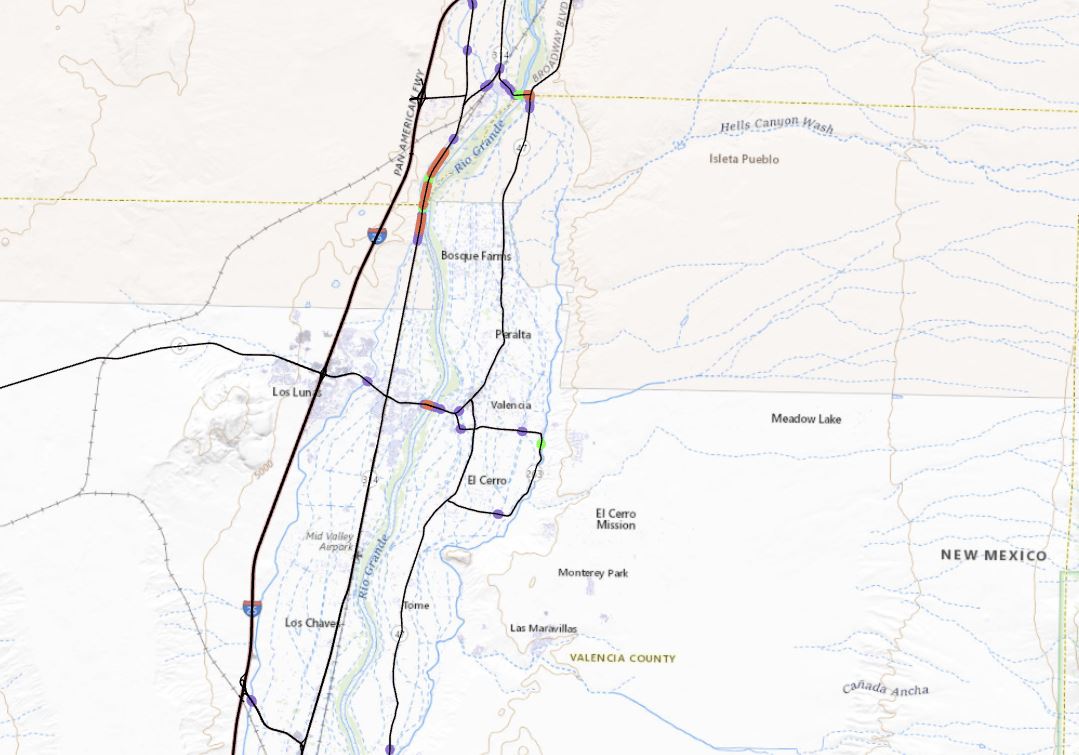

Sensitive Resource Mapping
Identifying sensitive resource areas and adjusting management accordingly is critical to good environmental stewardship of NMDOT’s roadsides. We are consequently updating all sensitive resource mapping and developing a comprehensive map of sensitive resources near our right of ways. Upon completion of the sensitive resource mapping update, we will be reviewing current roadside management practices and adjusting as needed to ensure the latest habitat and species conservation science is being employed in our decision making.
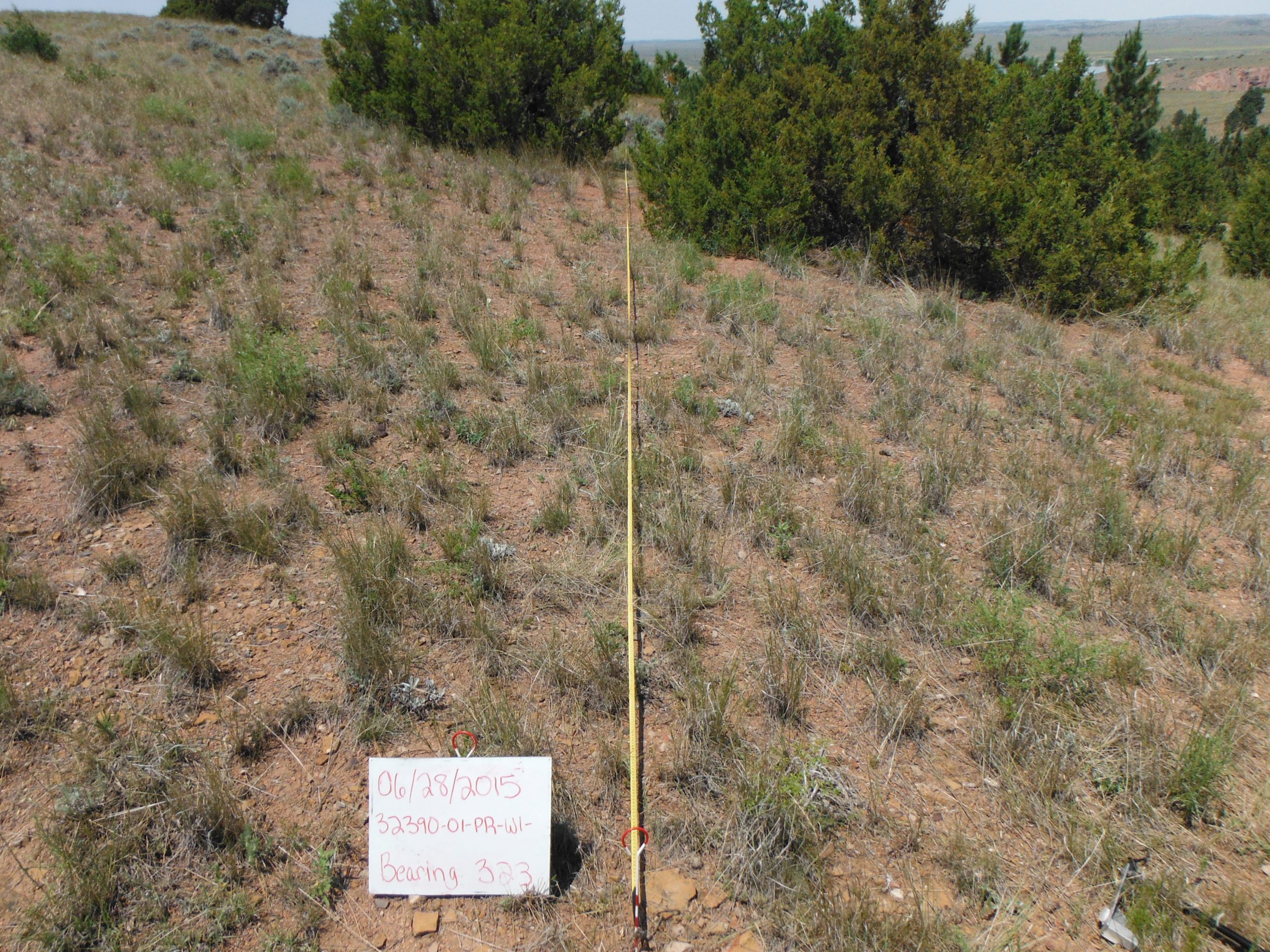
Monitoring and Adaptive Management
NMDOT records roadside management activities and consolidates this information into a roadside management database. This spatially-defined record of past management approaches will be used in combination with current management mapping to identify where to place vegetation monitoring areas. The data collected within the monitoring areas will be used to assess the performance of past management actions and, where warranted, adjust our management approaches.
Native Habitat Protection and Enhancement
In addition to improving overall function and value to our roadsides by implementing the IVM program, NMDOT will be identifying areas suitable for roadside enhancement/restoration activities that would best serve the surrounding communities. These include pollinator habitat protection, revegetation of construction areas with native species, restoration of riparian and wetland habitats affected by road improvement, and development of transition zones between the roadside and adjacent properties. The initiative increases the ecological value of our roadsides while enhancing the beauty of NMDOT roadsides across the state. We will also be exploring the opportunity to develop interpretive roadside materials to inform travelers of what NMDOT is doing to enhance the ecology and beauty of the roadsides in the Land of Enchantment.
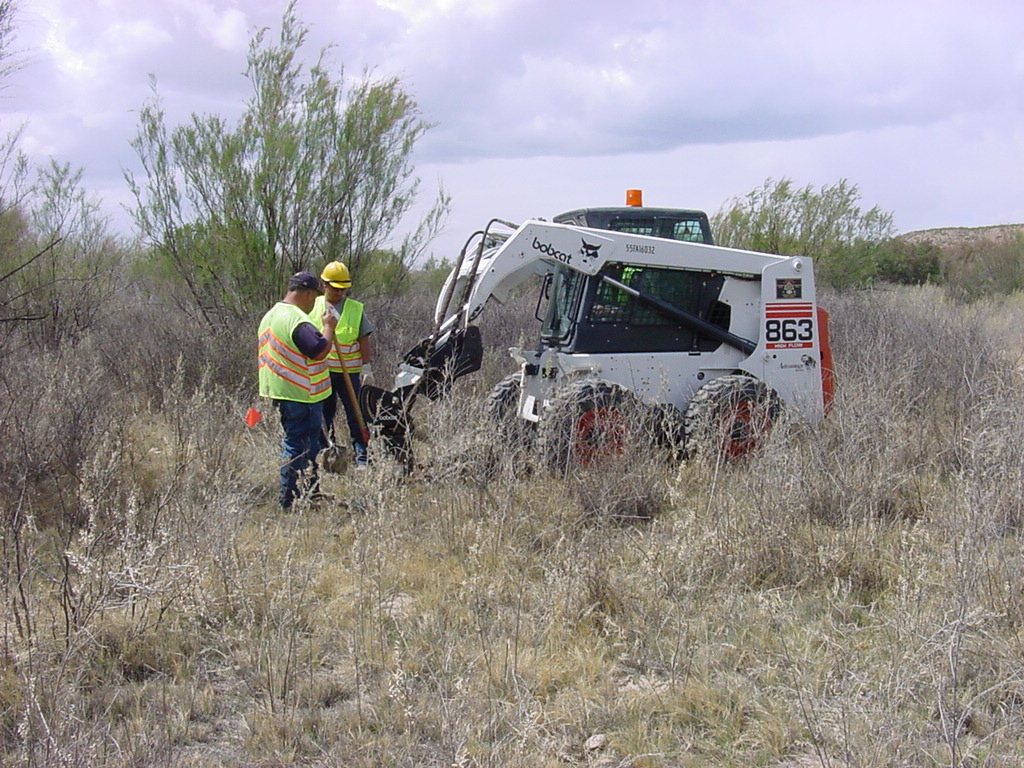

Native Habitat Protection and Enhancement
In addition to improving overall function and value to our roadsides by implementing the IVM program, NMDOT will be identifying areas suitable for roadside enhancement/restoration activities that would best serve the surrounding communities. These include pollinator habitat protection, revegetation of construction areas with native species, restoration of riparian and wetland habitats affected by road improvement, and development of transition zones between the roadside and adjacent properties. The initiative increases the ecological value of our roadsides while enhancing the beauty of NMDOT roadsides across the state. We will also be exploring the opportunity to develop interpretive roadside materials to inform travelers of what NMDOT is doing to enhance the ecology and beauty of the roadsides in the Land of Enchantment.
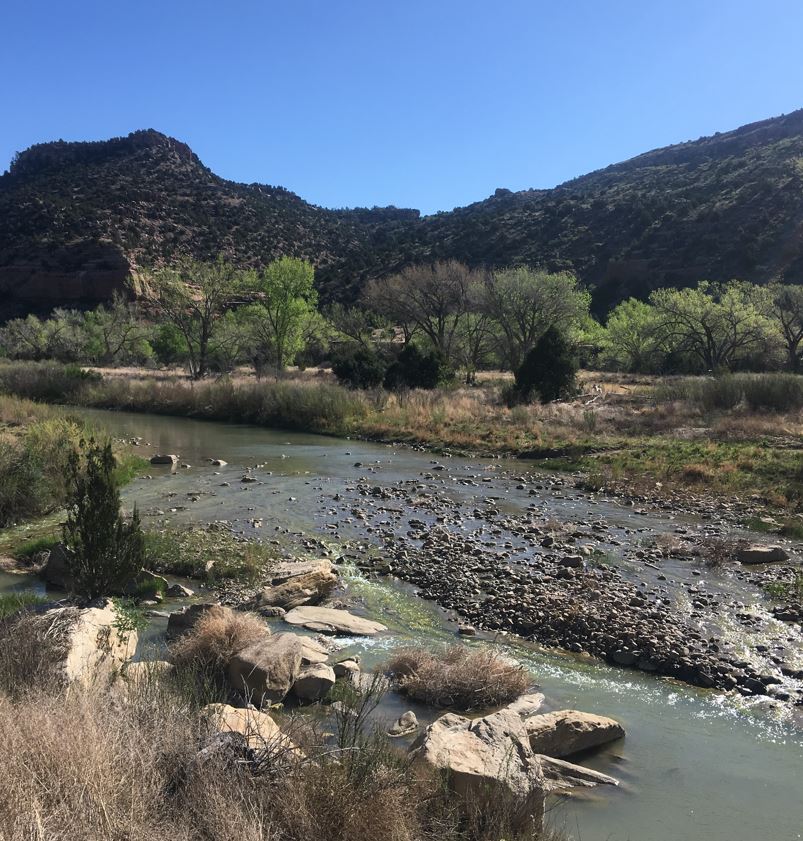
Ecosystem Goods and Services
- Regulating Services are the benefits people obtain from the regulation of ecosystem processes such as stormwater management, erosion control, and pollinator habitat.
- Cultural Services are the nonmaterial benefits including tourism Scenic Byways, spiritual enrichment, and recreation.
- Provisioning Services are the products people obtain such including food, fuel, and fiber.
- Supporting Services are necessary to produce all other EGS and includes soil formation and oxygen production.
NMDOT Integrated Vegetation Management Best Management Practices Guide
We are pleased to announce the release of the NMDOT Integrated Vegetation Management guidance document designed to inform and assist the NMDOT State Maintenance Bureau’s roadside vegetation management activities. This guidance document is intended to synthesize the processes and practices needed for a successful IVM program into an easily referenceable document designed to consolidate our knowledge of what roadside management practices do and don’t work, and provides the platform for future monitoring, data analysis, and adaptive roadside management. The Best Management Practices developed in this guidance document are evaluated for their potential to provide ecosystem goods and services (EGS). EGS are the benefits provided by the functions of nature that contribute to human well-being. As NMDOT moves forward with optimizing its roadside practices, this guide will remain a powerful tool to ensure continued improvement in the efficacy and value of roadside management within the State.
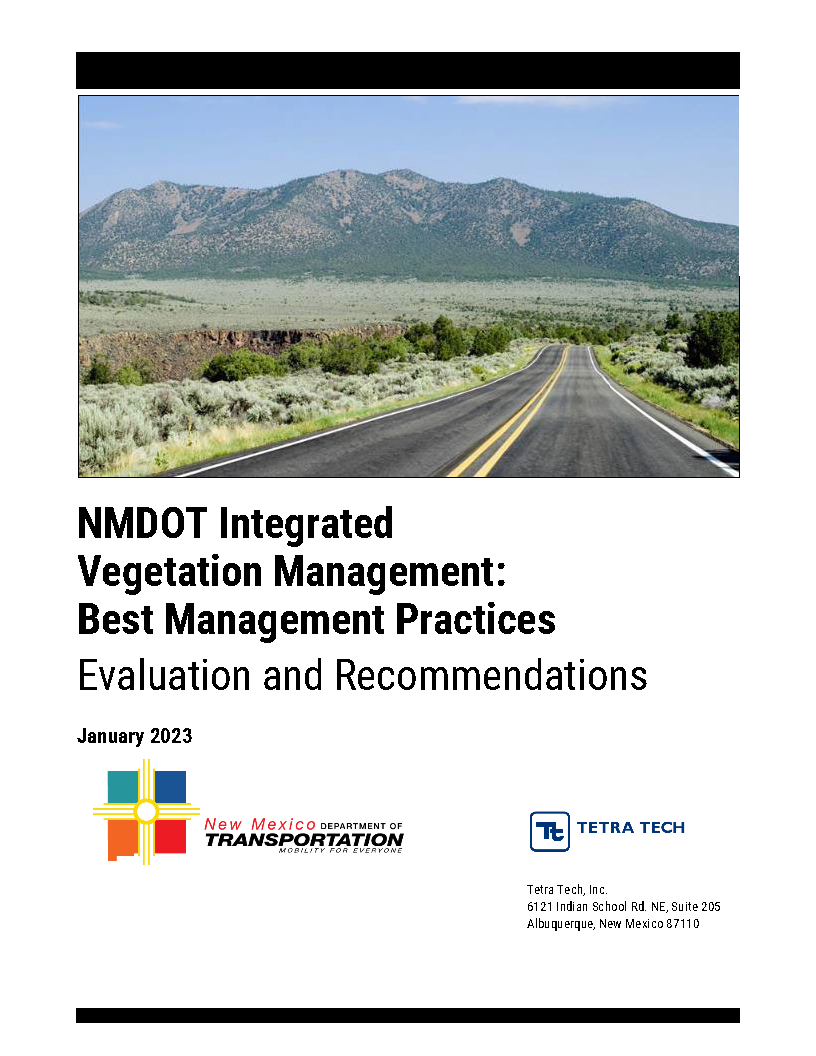
(Click on image to open document.)
Points of Contact
NMDOT will be updating this website regularly with additional information on how we’re executing on our vision to improve roadside vegetation management, health and value across the State. Members of our New Mexico community are encouraged to review the information provided within this website and we invite you to become an active participant in the development of our Integrated Vegetation Management Program at any time by communicating your comments, questions, and recommendations to our Maintenance Bureau and our IVM Specialist.
Kim Anaya, State Maintenance Coordinator
NMDOT State Maintenance Bureau
Phone: 505-699-0904
Email: Kim.Anaya@dot.nm.gov
Andrew Alderete, IVM Specialist
NMDOT Environmental Bureau
Phone: (505) 372-9909
Email: Andrew.Alderete@dot.nm.gov
